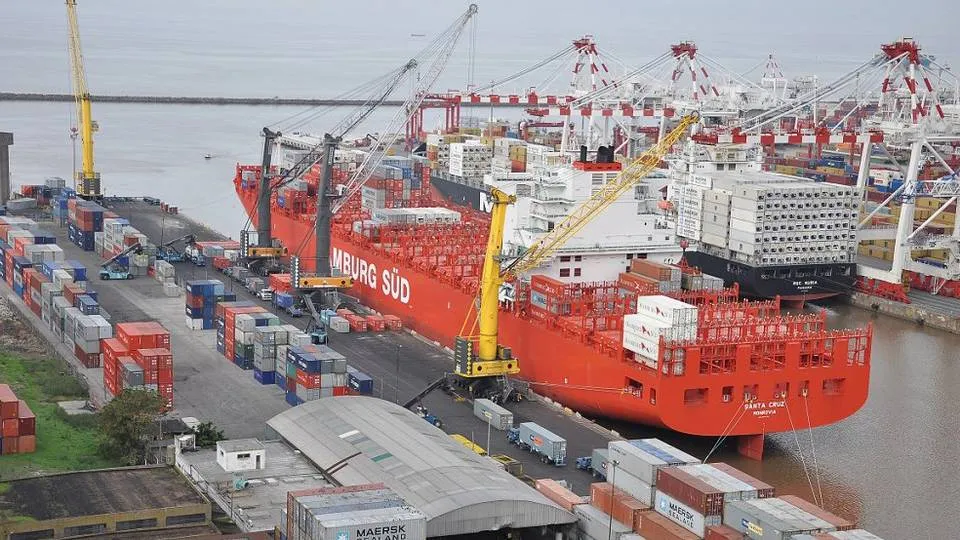The U.S. inland waterway system is a critical and underutilized component of the domestic supply chain that serves non-contiguous markets originating in or destined for Alaska, Hawaii, and U.S. territories and possessions. For transportation service providers and shippers that operate in the domestic trade of the U.S., ocean carriers, barge operators, and inland waterway providers can offer cost-effective scalable alternatives to the traditional surface and air modes that connect these regions to the U.S. mainland.
Non-contiguous domestic trade involves a legal and operational framework that is complex and shaped by multi-agency oversight, legacy statutes, and evolving operational realities that involve the Surface Transportation Board (STB), the U.S. Army Corps of Engineers (USACE), and the Maritime Administration (MARAD). To navigate these complexities, prospective market participants will benefit an understanding of the interplay between these legal, regulatory, and operational schemes, as this remains a pathway for shippers and service providers to diversify their domestic supply chains and expand capacity to strengthen their operational resilience, particularly when other modes face broad service disruptions.
STB Jurisdiction
The STB has jurisdiction over waterborne transportation in the non-contiguous domestic trade of the U.S., even if a particular shipment moves through international waters. 49 U.S.C. § 13521. Stakeholders may see this as a benign authority, but recent STB rulemaking activity suggests there is a broader regulatory structure on the horizon. The agency’s 2019 rulemaking that requires electronic tariff publication and annual certification under 49 U.S.C. §§ 13701-02, signals a similar trend toward digitization as seen with other regulatory agencies, which has clear compliance implications for shippers and service providers.
STB Compliance: Tariffs
Legal compliance in waterborne transportation hinges on the tariff publication requirement. Pursuant to 46 CFR § 1312.3(a), all published tariffs for services subject to the jurisdiction of the STB must: (i) be filed in English; (ii) include an accurate description of the services offered to the public; (iii) provide the specific applicable rates explicitly stated in USD and service terms; and (iv) be arranged in a way that allows for the determination of the exact rate(s) and service terms applicable to any given shipment. The STB permits carriers under 46 CFR § 1312.3(a) to electronically publish and maintain tariffs on the websites or third-party vendor hosting sites.
Indeed, the STB requires carriers to maintain and make publicly available their tariffs, which must include applicable rates, charges, and other operational terms. 49 CFR Part 1312. The only stated exception to this publishing requirement is if a carrier provides transport for charitable purposes. Otherwise, carriers can only perform services in the non-contiguous domestic trade “if the rates, and related rules and practices, for such transportation or service are contained in a published tariff that is on file with the Board and in effect[.]” 46 CFR § 1312.2(a). A carrier that fails to appreciate and comply with its tariff publication (and amendment) obligations, particularly where intermodal movements are implicated, create the potential for agency enforcement or even suspension or revocation of operating authority.
With the increasing digitized compliance obligations of federal agencies, as well as the STB’s enforcement trends, service providers need to maintain proactive tariff governance and digital audit readiness.
Areas for Commercial Growth and Infrastructure Development
The Fixing America’s Surface Transportation Act (FAST) and the Water Resources Development Act (WRDA) serve as foundational policy tools the STB considers to build out and promote inland water operations and infrastructure, development, and investment. In 2017, the FAST Act accelerated long-delayed lock-and-dam modernization projects and the 2024 WRDA update reinforced federal support for channel maintenance, port dredging, and equipment upgrades. Carriers are only beginning to leverage programs spearheaded through these Acts to structure proposals that meet eligibility requirements, long-term network efficiencies, and commercial return on investment thresholds.
The U.S. Marine Highway Program (USMHP), which is administered by MARAD, is a federally backed initiative that promotes barge and short-sea shipping as a potential congestion mitigation tool. Carriers that have tapped into USMHP grants are seeing the following benefits:
Carriers’ participation in USMHP initiatives enhances both operational resilience and commercial value for shippers. The U.S. inland waterway system is structurally and environmentally challenged, which presents certain risks and barriers to entry, including:
Conclusion
Navigating non-contiguous domestic trade demands an integrated legal and operational strategy that accounts for ocean, barge, and inland waterway transportation under overlapping regulatory regimes. Shippers and service providers that consider the use of waterborne transportation, in addition to surface, rail, and air transport, are best positioned to mitigate risks that can arise when there are downturns in the market or broader supply chain issues. As the STB’s regulatory landscape continues to evolve, proactive planning will be critical to ensuring long-term resilience and commercial success in this often forgotten segment of the U.S. supply chain.






